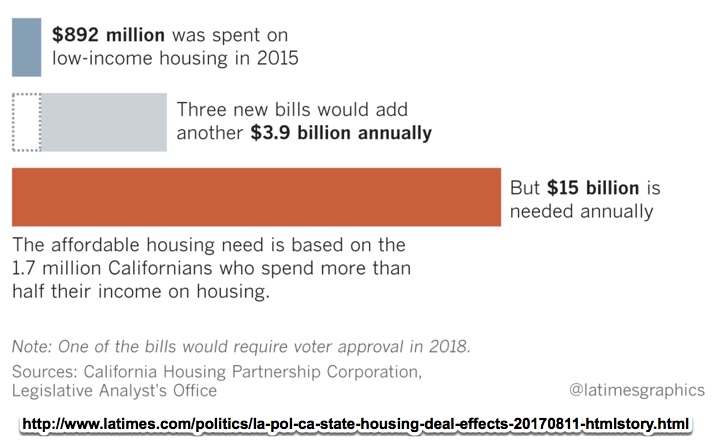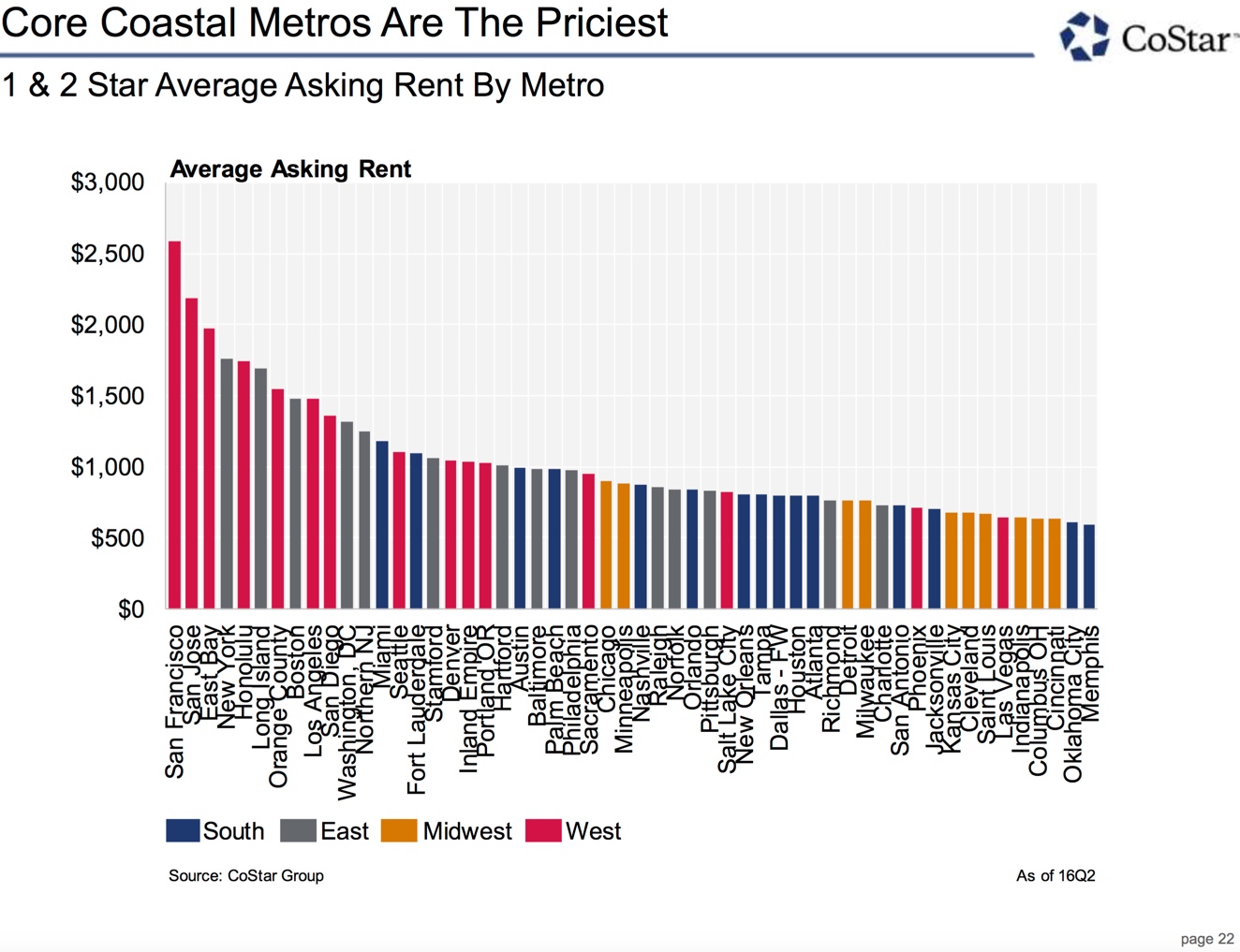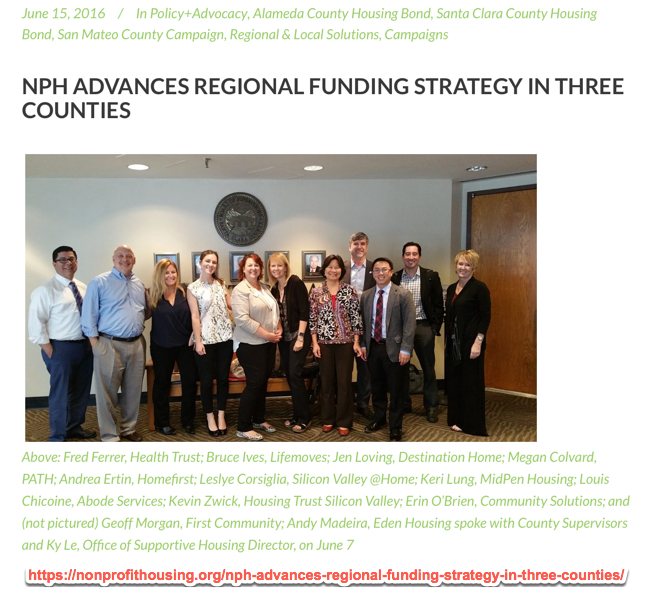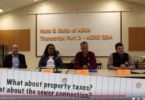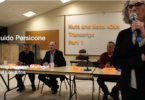There are two sides in the “How to increase affordable housing” debate. You can hear one of them this Wednesday, Nov. 15, 2017, 5:30 to 7:30 pm , hosted by our north county district Santa Clara Country Supervisor representative, Joe Simitian. Los Altos Women’s Caucus is a sponsor.
You will hear the point-of-view of the ‘official’ LOW INCOME HOUSING advocates, SV@Home, a project of the Housing Trust Silicon Valley, the largest “non-profit” which is building and “administering” quasi-governmental subsidized housing in our area.
Los Altos Women’s Caucus: “Greetings, we look forward to seeing you this Wednesday at “The Invisible Housing Crisis in Los Altos” event. Parking is available in the Silicon Valley Community Foundation building on three levels, in the green and white spaces. Please go to the lower levels if all the spaces on the A level are full.” The office building is on the Mountain View side of ElCamino right across from Jordan. It is that very tall, triangular, modern white building.
IF YOU WISH TO ATTEND this affordable housing event, IT IS NOT TOO LATE TO PHONE an RSVP 650-303-7227. Walk-ins may be ok.
-
LOS ALTOS WOMEN’S CAUCUS
-
650-303-7227
-
WEDNESDAY, NOVEMBER 15 FROM 5:30 PM TO 7:30 PM
-
SILICON VALLEY COMMUNITY FOUNDATION
2440 W. EL CAMINO REAL, SUITE 300 MOUNTAIN VIEW, CA 94040
Or rsvp online….https://www.evite.com/event/024CFP4LXJ4SHIFOIEPHWBQWHXJTR4
Lalahpolitco plans to attend this affordable housing event . I do not expect that this is a balanced presentation of a variety of solutions to the general housing shortage. I expect it is focused narrowly on providing new government subsidized units to low-income households. It is not about the middle-class shortage.
For more information on general housing solutions such as 1) increasing the total housing supply or 2) removing zoning restrictions which have reduced the amount of Naturally Occuring Affordable Housing, read on.
Total housing supplied each year…
Is it total housing supply or “Low Income Housing”?
Excerpt from “The End of the Housing Supply debate (maybe)” …
“Slowly, the rhetorical battle is being won, as [Low Income Housing], affordable housing advocates acknowledge more supply matters…
There’s been a war of words about what kind of housing policies are needed to address the nation’s affordable housing problems. Economists (from the White House to academe) argue that increasing housing supply is essential. Low income housing advocates of many stripes push for efforts to pay via taxes or require via regulations [“inclusionary zoning”/density bonuses] that more units be built specifically for low and moderate income households.
Everyone agrees that much of the affordability problem is due to national policies that provide massive subsidies to homeownership by the wealthy (mostly through the tax code) and parsimonious and chronically underfunded programs that provide subsidies for the poor (which reach less than a quarter of those technically eligible), a fair share of responsibility lies in the hand of local governments.
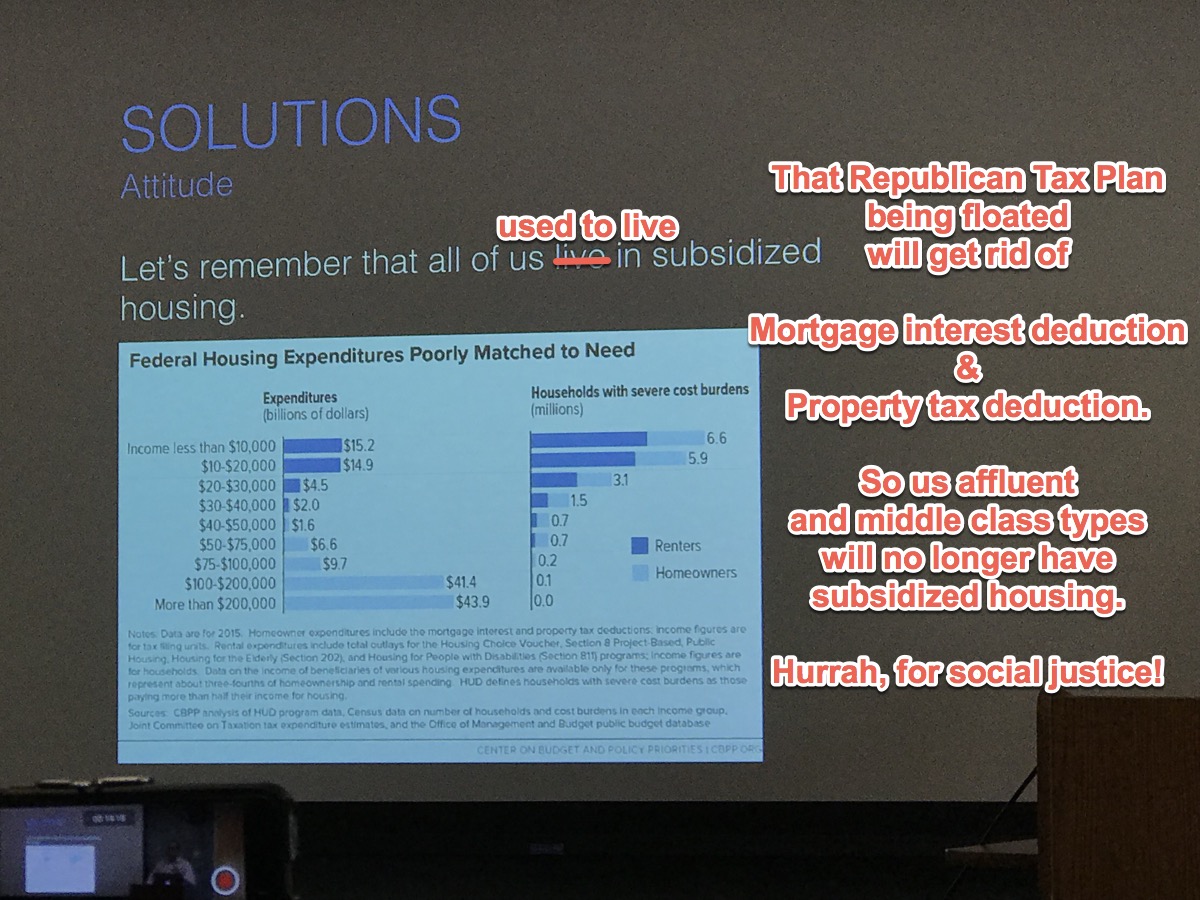
A slide by John Barton, attempting to describe the housing subsidies which distort the demand for homeownership
Is the key [to affordable housing] relaxing zoning limits to allow more market rate housing [more units per acre], or does it require regulating or subsidizing more affordable [Low Income] units into existence.”
Lalahpolitico: That is the question.
Chart: New State taxes to pay for government subsidized housing for low-income households.
Is Naturally Occurring Affordable Housing a Good thing? (NOAH)
It’s a good and “natural” thing…
Excerpt from “Housing Does Filter” Oregon Office of Economic Analysis..
“Most new construction in recent years has been at the top end of the market. This is partially due to that’s where the numbers pencil out best for developers but also because that’s where the strongest growth in households has been, in the $100,000 per year and over groups. The majority of the population cannot afford new construction today, but this has largely been the case historically as well.
However, over time housing does become more affordable as it depreciates. This is called filtering and has been a surprisingly contentious topic within the housing discussion lately. The key is that filtering does not happen overnight. It is very much a longer run process. Filtering is also one of the major ways to provide reasonably priced workforce housing for those making in or around the median family income.
To show how filtering works and put some local numbers to it, I have pulled together a couple graphs below, along with borrowing some work from ECONorthwest as well. In recent weeks I have had the opportunity to co-present with both Lorelei Juntunen and Mike Wilkerson from ECO on housing at a planners conference at Metro and the state’s House Committee on Human Services and Housing, respectively.
First, a simple graph showing median rents in the City of Portland and the overall MSA by year of construction. Clearly newer construction is more expensive and housing built in the 1960s and 1970s is the least expensive. Ownership patterns are very similar. Note that the oldest homes are also more expensive. This is largely due to the fact that only a fraction of the homes built 100 years ago remain. Those that do are generally of the best quality, have been remodeled and taken good care of.”

Lalahpolitico; This reminds me of how the first housing subdivision of Los Altos… the 1906 Shoup Park – University Ave area… became a “slum” in the 1950s – 1960’s at 50 years of age. It was affordable housing. Everyone with professional job in the 1950′ was moving into the brand new, modern, relatively expensive ranch homes in the new subdivisions. But by the 1970’s the Shoup area was turning around and being gentrified and restored to be one of most expensive areas of Los Altos today. Many of the homes are approaching 100 years old.
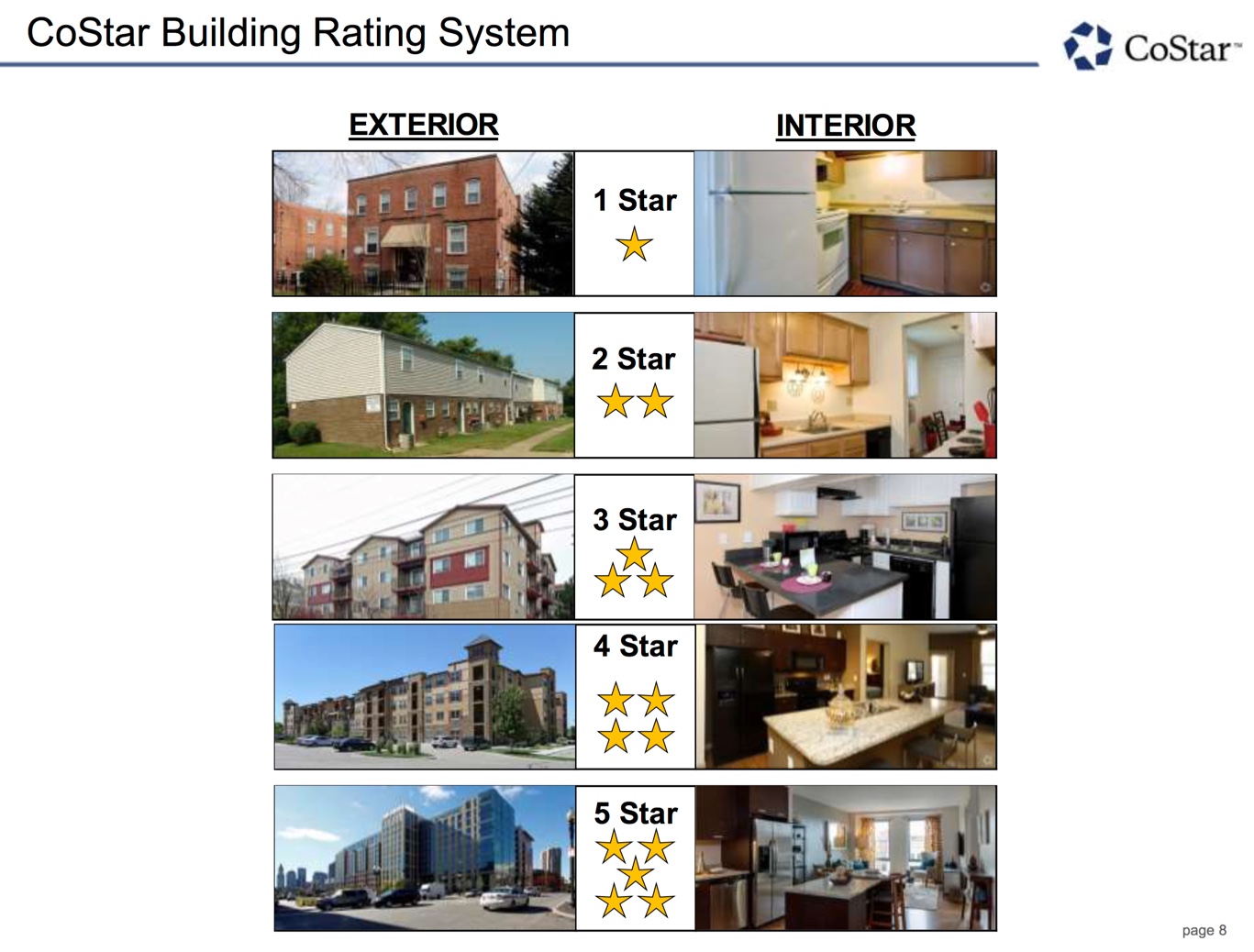
Rental buildings of 1 or 2 star quality – as rated by CoStar Analytics – are affordable in many locales in the US. Looking at these pics…I give my current kitchen 1 star!
From a good essay on the word “affordable” and on the role of the real estate “filtering” process in providing affordable housing
“Stuart Rosenthal of Syracuse University uses nearly 40 years of data from the American Housing Survey to figure out the average pace of filtering across the country, and what makes housing filter more quickly in some places than others.
In those coastal regions, severe restrictions on new housing construction since the 1970s [like in Los Altos] have created a “shortage of cities,” driving up home prices and preventing the kind of filtering that has historically produced the lion’s share of affordable housing—and which still does in much of the rest of the country.
Which leads to the second lesson. By putting severe limits on new housing, the wealthy metropolitan areas of the East and West Coasts have embarked on a several-decades-long experiment in what happens when housing filters down much more slowly than normal. The result has been a disaster: highly inflated prices for older homes that have left so little room for people of low and modest incomes that they’ve changed national migration patterns.
As a result, these regions have created a need for much broader and deeper housing subsidies than would be required if they had allowed for normal filtering.”

Older, lower “quality” 1 & 2 start buildings are plentiful in our area. But per CoStar, the average rent for them is $2250 to $2500. Relatively affordable but…really low cost? No.
NOAH and filtering is a bad thing… per Steve King
“From my perspective, there are two major issues with NOAH: one is semantic, and one is practical.
First off, there is nothing natural about NOAH’s affordability. This housing stock is most often found in lower-income neighborhoods and communities of color where decades of disinvestment and uneven development has unnaturally nurtured an “untapped market” ripe for speculative reinvestment. It may be unsubsidized and affordable for now, but it is also under-maintained and precarious, with eviction and displacement a palpable, everyday threat. (For instance, building owners can make improvements to their properties that range from routine maintenance to over-the-top efforts to improve the marketability of their development and then pass those costly expenses directly on to tenants. For long-term, very low-income tenants, the capital pass-through can be untenable.) Referring to this housing as natural has the chilling implication that building owners who fail to maintain their properties, institutions, and systems bear no responsibility for its problematic status.
As a corrective to the benign and misleading phrase NOAH, I propose HAUTMSS (Housing Affordable Until the Market Speculation Starts; suggested pronunciation: “hot mess”) as a more appropriate term. (Despite the potential for confusion, I use HAUTMSS interchangeably with NOAH in the remainder of this article.)”
…
Steve King continues…”A recent study of NOAH properties commissioned by the Urban Land Institute identified over 5.5 million “fatigued” housing units in 253,467 properties across the United States. Shaw Lupton, a consultant with CoStar—a real estate analytics firm—correctly identified a “vast opportunity in this segment of the market,” a fact certainly not lost on the speculators. For instance, a Bloomberg news story from October 2016 quoted a real estate investor who specifically targets NOAH acquisitions where rents can be raised by at least 25 percent. While this predictably extractive approach may yield one narrow avenue of market-based opportunity, what if instead the real “vast opportunity” was to prevent displacement, permanently preserve affordability, and simultaneously improve the habitability of a neglected housing stock?”
Lalahpolitico: Mr. King means the “opportunity” of the NOAH housing stock… should not be for commericial, for-profit real estate developers but for “a contingent of organizations well positioned to take on the challenge—limited-equity housing cooperatives, community land trusts, mutual housing associations, and any number of innovative combinations of these non-speculative, lasting approaches. This preservation challenge presents a prime opportunity to lift up and properly resource these lesser-supported strategies of resident-controlled housing…[need] a long-term commitment to stewarding quality housing and fostering resident leadership…Organizations doing this work need access to nimble financing so they can be competitive in the market and snap up buildings just like speculators…”
Lalahpolitico: Show me the money? I think Mr. King thinks that some of our federal and state taxes now going to “high-capacity affordable-housing developers or community development corporations, and the affordable housing development infrastructure” [like Housing Trust Silicon Valley] should instead be directed to “tenant advocates/organizers”.
Remember that non-profits do not have shareholders who get paid dividends, BUT DO HAVE professional management who often get paid good salaries commensurate with the corporate sector. After all, the NPs and NGOs need to compete for the “talent.” Question: Is the Mr. King’s “resident-controlled housing” going to remain rental or will the tenants convert to owners? I expect probably rental.
Steve King gives some specific examples of Bay Area groups fostering “anti-displacement preservation strategy”
- San Francisco’s Small Sites Program supports the acquisition of small, unsubsidized rental properties whose residents are at imminent risk of eviction or displacement. Several nonprofit organizations, including the San Francisco Community Land Trust, Mission Economic Development Agency, and Chinatown CDC have used the program to step up their acquisition and stabilization of buildings with 25 units or less. (See related article about Limited Equity Cooperatives.)
Lalahpolitico: “Displacement” used to be called “moving.” It is a fact that geographic mobility across the U.S. is way down. Fewer and fewer people are willing to move for better opportunities elsewhere. Do I have a “right” to live where I live now …indefinitely? Maybe if I have a “story” to tell?
Consequences and Causes of Declining Geographic Mobility in the US
If you have access to the Wall Street Journal, “The country is the least mobile since after World War II…”
Who is SV@Home? A “project” of the Housing Trust Silicon Valley,
the “mega-corp” of subsidized housing
“SV@Home is the product of a partnership among the Silicon Valley Leadership Group, Housing Trust Silicon Valley, and the Nonprofit Housing Association of Northern California. It’s chaired by Ron Gonzales, the former San Jose mayor and current CEO of the Hispanic Foundation Silicon Valley. The board includes representatives from labor, development, the nonprofit world and Google.
San Jose saw a favorable court ruling on its inclusionary housing rule, and cities up and down the Valley are tacking controversial fees onto new development to fund affordable projects.”
“For now, SV@Home is housed out of the offices of the Housing Trust.”
The Executive Director is Leslye Corsigilia. The professional Non-profit housing sector is so large and vibrant in the Bay Area it has its own association…Non Profit Housing Association of Northern California. See photo above.
Telling stories of being a victim of the “Housing Crisis”
Mercury News, Brainstorming to end housing crisis
Lalahpolitico: Please read the Nov. 14, 2017 the Merccury story for yourself. Silicon Valley Leadership Group is funding a “civic engagement” effort where 10 people at a time are going to meet up all across the Bay area to tell their stories of suffering “displacement” or fearing displacement for themselves or for others, and how it makes them feel. Also these persons will discuss solutions. So these persons with no particular knowledge or skills of real estate markets, the law, land economics, property management or construction, etc., may through their “conversations … put forward out-of-the-box ideas that ivory-tower policymakers haven’t considered.”
Lalahpolitico: Hmmm. I doubt we’ll see a new solution that hasn’t been proposed before. I think we will see media reports that the community wants more government interventions [rent control] and subsidies [BMRs] in the local housing market. …I think this is perhaps the beginning of the campaign for the SB4 Housing Bond $1B which will be on the ballot in November 2018.
To sign up to host a conversation OR to participate in a conversation go to www.siliconvalleycf.org/onthetable

John Barton, Director of the Architectural Design Program at Stanford. Oct. 4, 2017, Los Altos Library…Lalah asks….Is the coastal housing crisis really invisible…it’s all over the local and national media too…
LALAHPOLITICO – WHY I’M ATTENDING
A couple of months ago, I attended a 8:30 AM presentation of the Los Altos Community Coalition at the Los Altos Library given by Los Altos born John Barton, Director of the Architectural Design Program at Stanford. The talk was billed as about affordable housing by someone who has been involved in building of such projects.
“John is also a board member of the Housing Trust of Santa Clara County and has been an ex-officio member of the boards of Avenidas and the Palo Alto Housing Corporation.”
I was expecting to see example of projects build and unbuilt, and what kind of financing, people, organizations, and processes are usually involved. I did not see that.

A boring PROBLEM statement. A whole hour on describing the problem which is already well-known to all in the room. No focus on housing solutions…The assertions on Barton’s above slide are outside his area of expertise. It’s not clear how better or more housing is going to fix poverty, reduce excess population growth, ameliorate wage stagnation and low jobs growth. [for this last one….unless there are union construction jobs building the housing!!!!]
Instead of speaking to his area of expertise — architecture and the construction of subsidized housing projects — Barton stepped outside of his expertise and spoke of economics, sociology, demography and some political science. [granted…He did serve a term in Palo Alto City Council.] The audience for his presentation was packed with the local, semi-official Affordable Housing advocates, so Mr. Barton was preaching to the choir.
He put together a slide deck that tells you about the PROBLEM, how big it is, how urgent it is, but nothing really about HOUSING SOLUTIONS in general, or even the solution he is often involved with…namely a 100% low-income project built on government land. I’d really like to understand how one makes such a project come about. I hope to hear about it tomorrow Nov. 15 at the Silicon Valley Commnity Foundation event. I already know about the problem. Tell me your part of the solution.
The Los Altos Housing Solution –
per Lalahpolitico
What with 15 new State Housing bills becoming law January 1, there is a lot we don’t know about how they will negate our prior strategy for providing affordable housing. I feel that when more people — Los Altos city staff, city council, planning, citizens — have had the time to understand what the complex pile of bills actually do, then we will realize we in the City of Los Altos probably need to DO some of all of the below. Go slow. Consider. Weigh. Think.
a) Increase the TOTAL MARKET RATE housing supply, preferably not just with single family homes and condos, but maybe with new duplexs, four-plexs, etc. Areas need to be upzoned. Why try to push all new housing units into high rises and on top of mixed use? We are woefully short of middle-density housing. We need to create more new mid-density construction in Los Altos so it can filter DOWN over the next 35 to 50 years! (See item d)
b) Increase the subsidized housing units – BelowMarketRate units (BMRs) – preferably with more rental and less for sale units. This targets the folks like brand new teachers who make 50 to $6oK. Once they make too much salary, we’ll have to kick them out of their apartments though. I guess they will have long commutes then?
c) Increase the number of granny units through removing barriers here in Los Altos. Our new ordinance seems stalled over a few details. Do you know the City of LAH is meeting its low-income RHNA housing requirements though ONLY granny units? Maybe newer teachers can find one of these once they get the boot at the BMR rental? This tactic could help provide affordable housing..
d) Encourage parcel assembly in selected R-1 areas which land use experts think could be upzoned to duplexs, fourplexs, PUDs, etc. with “graduated zoning” per Donald Shoup here. Yes, it is that Shoup family. This tactic could help provide affordable housing.
e) As suggested by the League of Women Voters and many others, consider a move to use of Floor Area Ratio rather than height limits as done in Mountain View. While you are looking at MV, look at how setbacks for proposed high-rises are more finally grained and CONDITIONAL on what a proposed high-rise abuts. This tactic could help provide affordable housing, while reducing neighbor resistance.
f) Redo the inventory of buildable sites reported in the City’s Housing Element Plan [3 MB, big] to conform with new State Laws.
It is not at clear to me that we need to build a 100% subsidized housing project on City-owned land within the boundaries of the City Los Altos.
It is not at all clear to me which development impact fees are good and which are bad. The 15 new state bills have something to say about fees…so be careful of unintended consequences.




